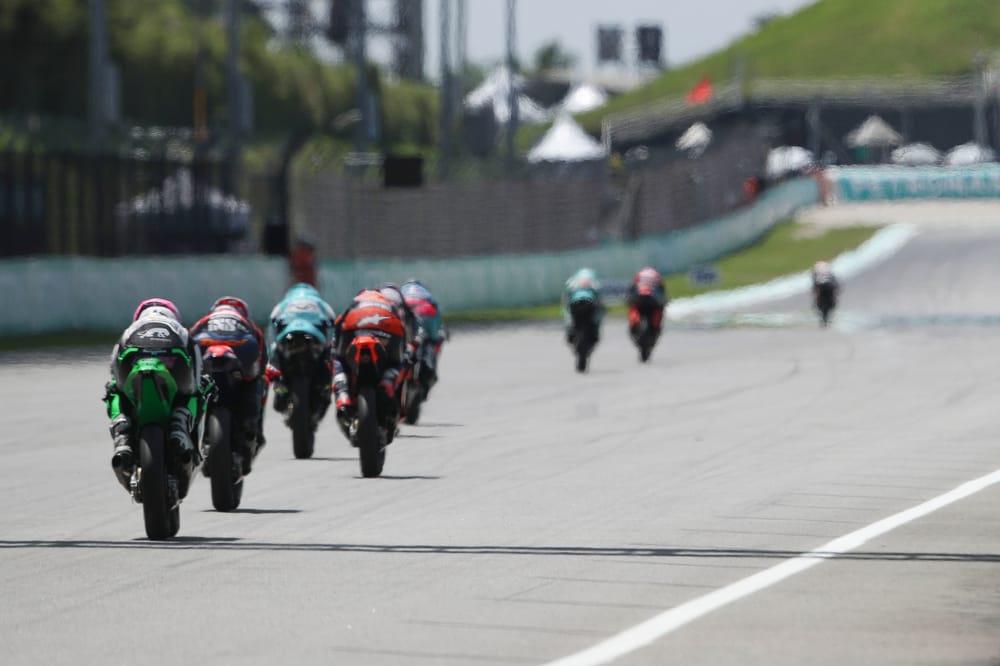There have been loud calls in the MotoGP paddock to bring back warm-up sessions for all grand prix classes and not just the premier-class machines following Sunday’s horrific Moto3 sighting-lap crash between newly-crowned world champion Jose Antonio Rueda and Swiss racer Noah Dettwiler.
Rueda hit the back of Dettwiler’s CIP Moto KTM at high speed as Dettwiler tried to pull off the side of the track following a technical problem, with both riders suffering significant injuries that necessitated both of them being transferred to hospital by helicopter before the race could start.
Rueda has since been diagnosed as suffering from a severe concussion, significant bruising and a fractured hand, while Dettwiler was described by his team as needing multiple surgeries in the coming days. The team also requested that his privacy be respected at this time, in lieu of further details.
Warm-up sessions for the Moto2 and Moto3 classes were unilaterally scrapped by series organisers Dorna at the start of the 2022 season, while also cutting MotoGP’s session in half from 20 to 10 minutes.
They were removed to make more room in the running order for fan activations, with most of the time saved now used to parade the MotoGP class around the circuit in a trailer - an event that has been largely derided by both fans and the paddock given both the rather comic appearance it often presents, especially at circuits with lower attendance, and that it only gives a very limited amount of visibility to many in the grandstands.
The news was met with alarm at the time by many in the lower classes, given that the sessions served not only to allow riders a last-minute chance at set-up changes for the race, but also to test out bikes ahead of the race and to get riders back up to speed.
Removing them from the schedule meant that, should riders end qualifying with a major crash that necessitates significant work on their machines, the very first time that they will be able to test out what could be a completely new motorcycle is on the sighting lap of the race, adding extra pressure to what is already the tensest part of the race weekend.
And while of course it’s impossible to say one way or another that the technical problem with Dettwiler’s bike that caused Sunday’s crash could have been averted by track time earlier in the day, it’s likely that the different dynamics of a practice session compared to a race sighting lap would have greatly reduced the risk.
Sighting laps traditionally see riders take different strategies, with some pushing to warm up tyres and brakes while others may ride more slowly to try and conserve fuel, meaning that there is always a risk of something like we saw on Sunday - a risk further compounded by removing the warm-up session that racers generally tackle in a more conventional way.
Given the consequences of Sunday’s crash and the anger expressed by many inside the Moto2 and Moto3 paddocks in the aftermath, it’s unlikely that the question of bringing back warm-up sessions is likely to go any time soon - but it remains to be seen whether the calls are heeded by MotoGP’s senior management.



